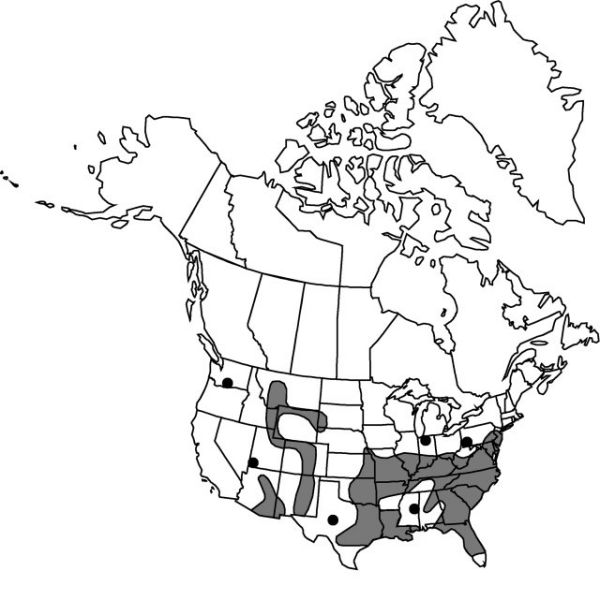Corallorhiza wisteriana
J. Acad. Nat. Sci. Philadelphia 6: 145. 1829.
Stems red-purple to yellowish-brown to yellow, base not strongly thickened nor bulbous. Inflorescences: racemes lax to dense, 10–55 × 1.3–3.5 cm. Flowers 2–25, inconspicuous; perianth open; sepals and petals purplish brown, often greenish distally, or pure yellow, 3-veined; sepals lanceolate, 4.5–10 mm; lateral sepals upcurved, connivent with dorsal sepal and petals, forming hood over column, somewhat falcate; petals often spotted with purple, broadly lanceolate, 4–7.2 mm; lip white, often spotted with purple, ovate to suborbiculate, unlobed, 4–7.5 × 2.5–7.5 mm, with 2 distinct basal lamellae, margins erose-denticulate to nearly entire; column curved toward lip, yellow to white, often with purplish apex, 2.4–5 mm, with basal auricles; ovary 3–8 mm; mentum present. Capsules ellipsoid-obovoid, 7–14 × 3.5–6.2 mm.
Phenology: Flowering Jan–Jul, according to latitude.
Habitat: Deciduous and coniferous woods, often preferring richer habitats than other coral-roots
Elevation: 0–3100 m
Distribution

Ala., Ariz., Ark., Colo., Del., D.C., Fla., Ga., Idaho, Ill., Ind., Kans., Ky., La., Md., Miss., Mo., Mont., Nebr., N.J., N.Mex., N.C., Ohio, Okla., Pa., S.C., S.Dak., Tenn., Tex., Utah, Va., Wash., W.Va., Wyo., Mexico
Discussion
Western collections of Corallorhiza wisteriana have frequently been misidentified as C. maculata. Antho-cyanin-free forms from the central states have been misidentified as C. trifida.
Selected References
None.